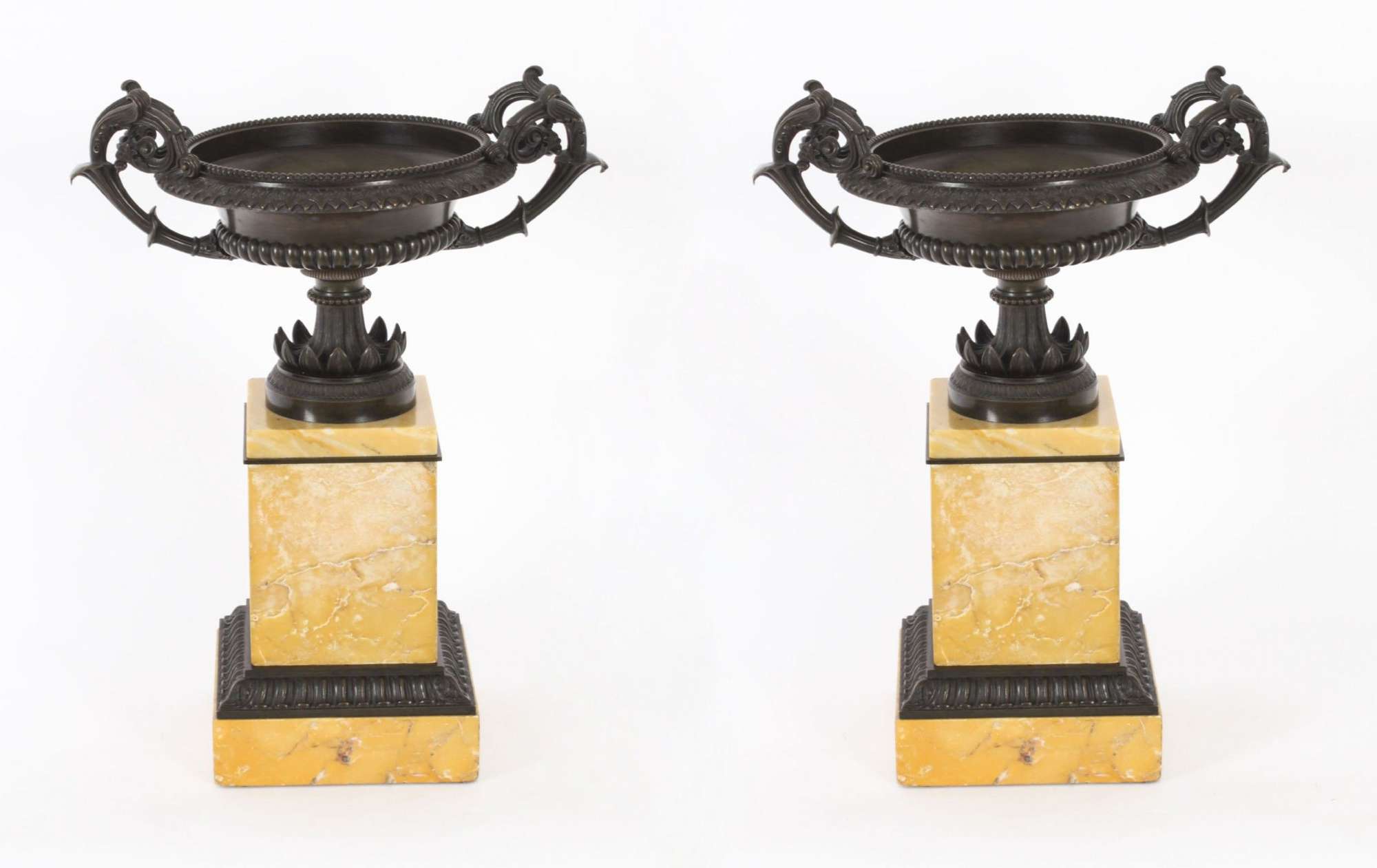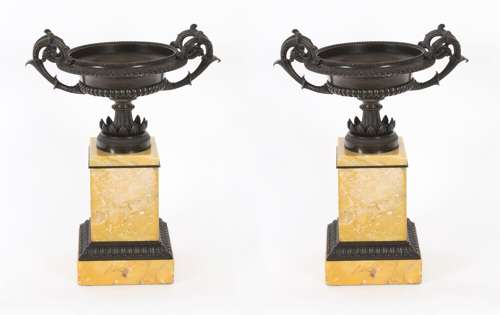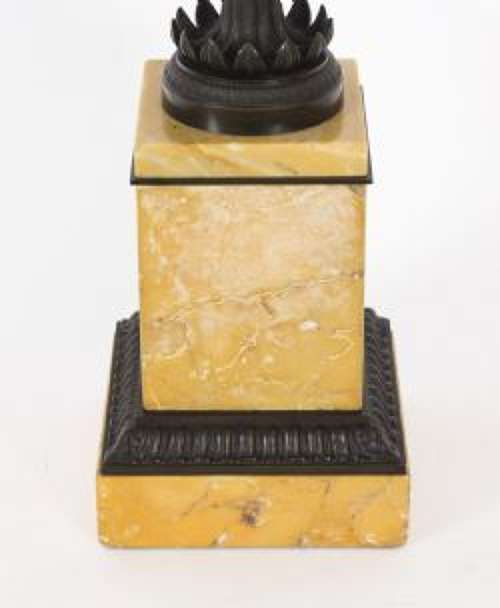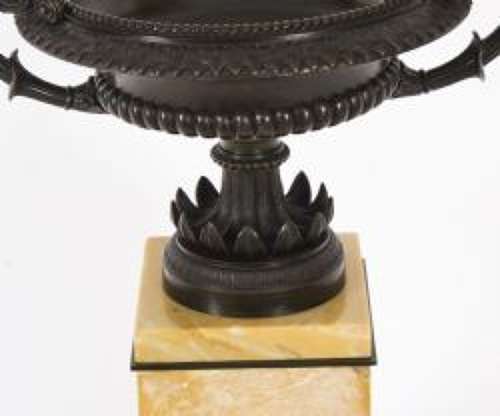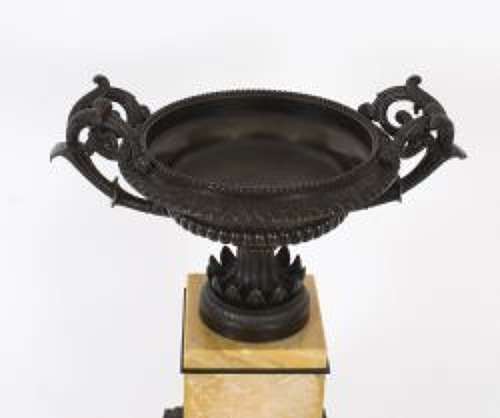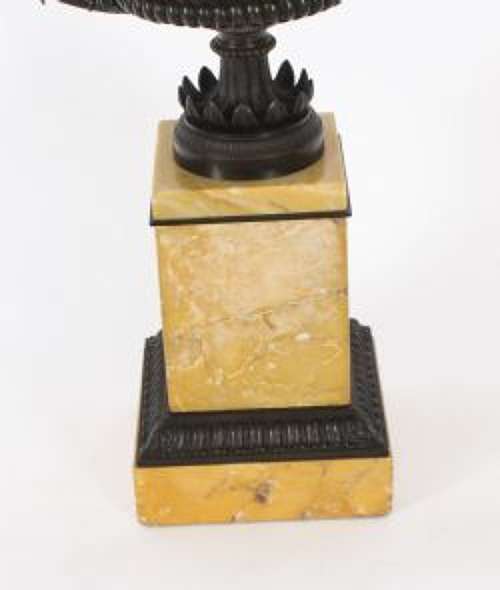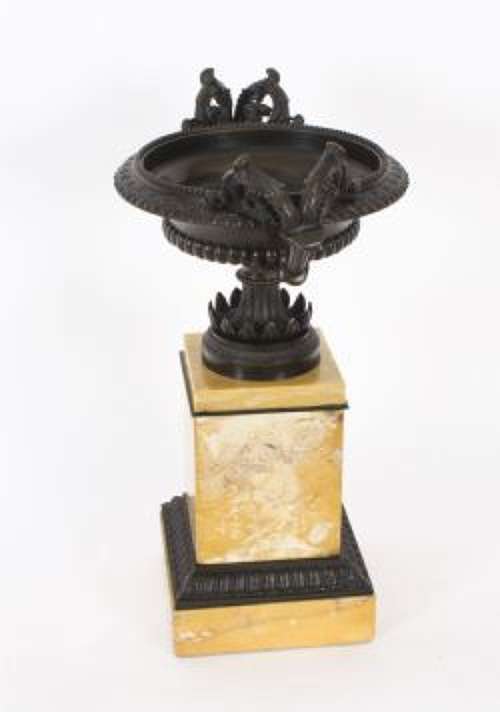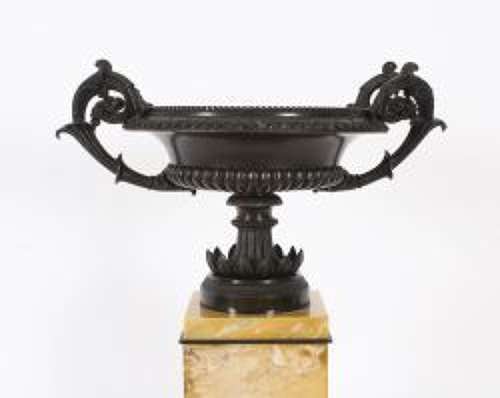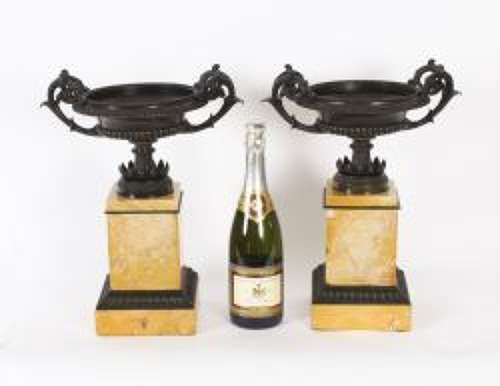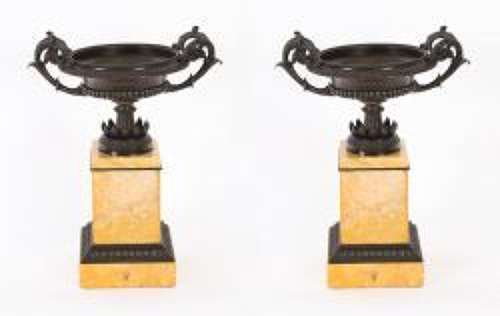Antique Pair Italian Grand Tour Campana Urns 19th C
Delivery Quote Request
Please fill in the form below to request a delivery quote from Regent Antiques.
Contact Regent Antiques
 London, United Kingdom
London, United Kingdom
Simply fill in the below form to get in touch with Regent Antiques regarding this item.
About this item
A superb antique pair of Italian Grand Tour patinated bronze Campana urns, circa 1870 in date.
This superb pair of patinated bronze campana urns are after the Borghese models with classical relief decoration with beaded rims raised on Siena Marble stepped pedestal bases.
This high quality hot cast solid bronze was produced using the traditional "lost wax" process, otherwise known as the "cire perdue" method.
The craftsmanship is second to none throughout all aspects of this pair and they are sure to add an unparalleled touch of class to your home.
Provenance:
House on Belgrave Square, London
Condition:
In excellent condition, please see photos for confirmation.
Dimensions in cm:
Height 40 cm x Width 31 cm x Depth 52 cm
Dimensions in inches:
Height 1 foot, 4 inches x Width 1 foot x Depth 1 foot, 8 inches
Belgrave Square
Known to be one of the most prestigious addresses in the country, Belgrave Square has been famous since its development in the mid 19th century, commissioned by the 2nd Earl Grosvenor, late 1st Marquess of Westminster and contracted/built by Thomas Cubitt and George Basevi respectively.
Whilst the majority of properties are now embassies or headquarters for international businesses or charities, very few remain as private houses, including this house which Bellmans have been instructed to sell the contents on behalf of the current owners.
The Grand Tour
was the traditional trip of Europe undertaken by mainly upper-class European young men of means. The custom flourished from about 1660 until the advent of large-scale rail transit in the 1840s, and was associated with a standard itinerary.
It served as an educational rite of passage. Though primarily associated with the British nobility and wealthy landed gentry, similar trips were made by wealthy young men of Protestant Northern European nations on the Continent, and from the second half of the 18th century some South American, U.S., and other overseas youth joined in. The tradition was extended to include more of the middle class after rail and steamship travel made the journey less of a burden.
The primary value of the Grand Tour, it was believed, lay in the exposure both to the cultural legacy of classical antiquity and the Renaissance, and to the aristocratic and fashionably polite society of the European continent. In addition, it provided the only opportunity to view specific works of art, and possibly the only chance to hear certain music. A grand tour could last from several months to several years. It was commonly undertaken in the company of a knowledgeable guide or tutor.
The Grand Tour not only provided a liberal education but allowed those who could afford it the opportunity to buy things otherwise unavailable at home, and it thus increased participants' prestige and standing. Grand Tourists would return with crates of art, books, pictures, sculpture, and items of culture, which would be displayed in libraries, cabinets, gardens, and drawing rooms, as well as the galleries built purposely for their display; The Grand Tour became a symbol of wealth and freedom.
Lost Wax Method
sometimes called by the French name of cire perdue or the Latin, cera perduta is the process by which a bronze or brass is cast from an artists sculpture.
In industrial uses, the modern process is called investment casting. An ancient practice, the process today varies from foundry to foundry, but the steps which are usually used in casting small bronze sculptures in a modern bronze foundry are generally quite standardised.
Siena Marble
The natural beauty of Italian Siena marble has been prized for its luster and natural beauty throughout history. Giallo Siena marble was formed eons ago when limestone was subjected to intense pressure and heat. The calcite crystals formed like millions of tiny gems locked together, giving the natural Giallo Siena marble its beautiful luster.
Our reference: A3719
Internal Ref:
A3719
Date of manufacture : 1800
Additional Information
1043345 (AB-182666)
W: 31cm (12.2")H: 40cm (15.7")D: 52cm (20.5")
![]() London, United Kingdom
London, United Kingdom
Regent Antiques was established in 1980. Born out of a natural love for art and beautiful objects, we have been a highly respected member of the antique fraternity ever since. Industry bodies of which we are a member include LAPADA and CINOA. Over the decades our business has gradually evolved...

